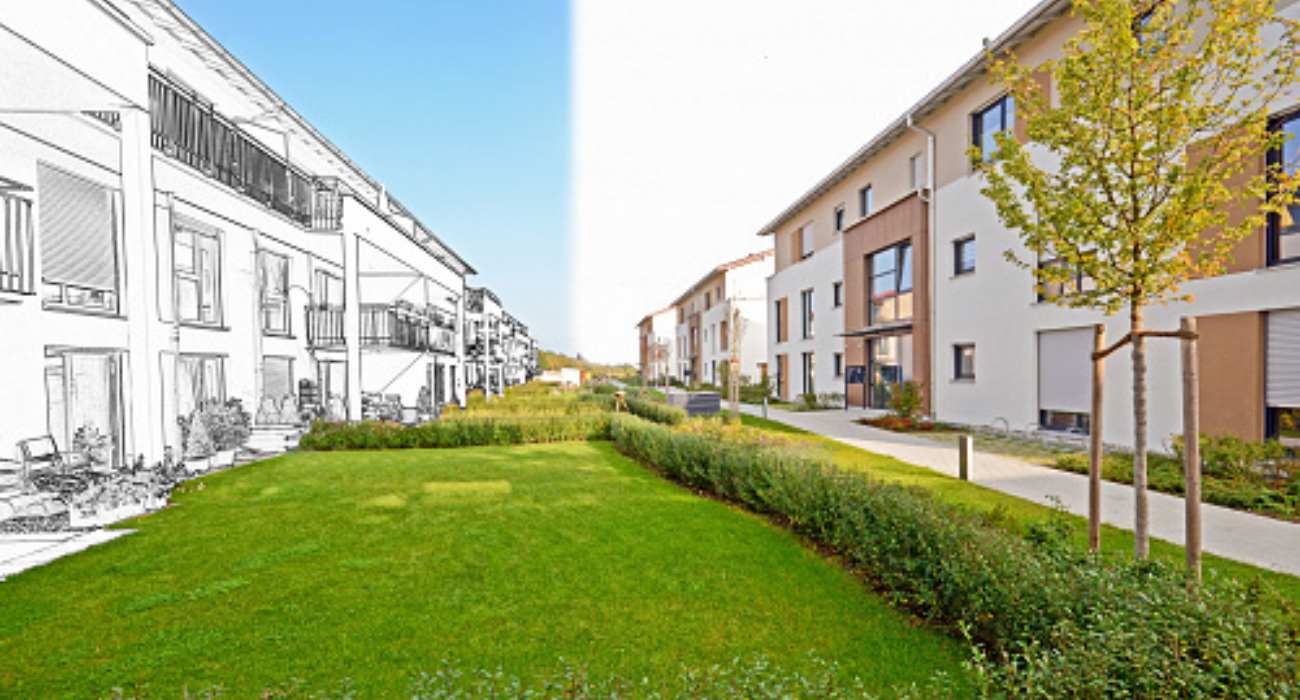Build-to-rent properties are quickly becoming a trend in the real estate market. However, before you take out a high-interest personal loan to fund this investment, it's essential to understand the pros and cons of this unique opportunity.
Do you ask yourself, are build-to-rent homes worth the investment? Or what advantages and disadvantages might they have? This article answers all your questions right now:
Houses for rent in Edensor Park offer a variety of options suitable for families and individuals, with close proximity to schools, parks, and shopping centers.
What are Build-to-Rent Homes
Build-to-rent homes are a type of residential property explicitly designed for the purpose of renting out to tenants. If you're familiar with the rental market, you probably know most tenants live in homes built several years ago and often repurposed for renters. In contrast to traditional rental properties, build-to-rent homes are typically owned and managed by large institutional investors, such as real estate investment trusts (REITs) or private equity firms.
These properties are usually built to a higher standard than traditional rental properties, with features such as modern amenities, communal spaces, maintenance services, and on-site management. During fittings, investors typically include projects with a high return to boost their profit margins. Discuss with a professional property manager in Philadelphia how to maximize ROI. In addition, most contractors, investors, or landlords often think long-term during the design phase of Build to rent properties. They also aim to provide more service and convenience than other rental properties.
Pros and Cons of Investing in Build-to-Rent Homes
Pros
Consistent Income
Build-to-Rent properties offer tenants a better quality of living because their facilities are newer and much more convenient. Considering these homes have better amenities, locals are more likely to favor this rental type over older buildings with far less comfort if they are reasonably priced. Thus, this type of housing is in high demand, ensuring that your listings will have multiple applications. In addition, that makes BTR houses a more stable investment option, providing regular income. So, if you have and want to sell house in San Bernardino, for example, this can be a good opportunity.
Economic Stability
Another perk investors gain from investing in BRT homes is better economic stability. During financial downturns, more people are inclined to rent rather than buy, and with more millennials giving up on the dream of owning a home, high-demand rentals look more promising. However, this shift in generational values leaves a gap for savvy investors to fill as the need for comfortable rental housing swells. Besides, with experts predicting a looming recession in the market outlook for 2023, it's highly likely rental demand will continue to increase.
Lower Tenant Turnover
BRT homes offer more comfort and better amenities, increasing their demand on the rental market. In other words, besides reducing your vacancy rates, tenants are more likely to renew their lease after it expires.
Lower tenant turnover means fewer months of paying utilities and other bills for an empty unit. So you not only save more money, but you also stand to earn more too.
Better Management
Finally, BRT homes are more likely to employ professional management to better cater to tenant needs, cut costs, make timely repairs, and schedule maintenance. As a result, professionally managed apartments are more likely to run efficiently and reduce the landlord's workload. Besides ensuring that your business runs much smoother, better property management can minimize tenant turnover and preserve your rental's good condition.
Cons
High Initial Costs
Despite meaning more economic stability and consistent income, a significant drawback for investors regarding BTR apartments is that the initial cost is often high.
Without the right plan for financing, investing in a build-to-rent property would be an expensive undertaking that would put considerable financial strain on an investor. Even if you were to figure out how to foot the bill, because build-to-rent properties are so expensive to build or purchase, it would take a while for you to start making a profit.
Difficulty in Finding the Right Location
Another drawback that might make you think twice about investing in BTR houses is that it can take time to find the right location. As we highlighted earlier, these rental types are expensive to build and often mean tenants must pay more. While the amenities might be great, paying more certainly means renters must consider other factors closely.
For example, if you invest in BTR houses on the outskirts of town to cut costs, you could lose more money through vacancies. In addition, tenants will tend to stay away if your location lacks convenient access to public transportation, restaurants, schools, and recreational activities. On the other hand, if you invest in an area with a fantastic walkability score or a high-value location, you might spend more on taxes. Thus, finding the right place to invest might take time and effort.
Lower Liquidity
Everyone knows that investing in rental property requires sacrificing some liquidity. After all, buying a home is a big purchase, especially with taxes, inflation, and other regulations to consider. However, BTR houses are often more illiquid than their counterparts because they're more expensive. As a result, finding a buyer willing to pay what you're ready to sell for can be challenging.
Conclusion
That's a wrap! If you're an investor considering expanding your portfolio or investing in real estate for the first time, build-to-rent properties are undoubtedly worth a thought or two. BTR is an attractive option for those looking for a steady income and more economic stability. Better property management by a professional can also make the daily running more efficient and offset some of the cons of investing in BTR. And as the real estate market continues to grow, build-to-rent properties will enter the limelight to curb the increasing demand for housing.


